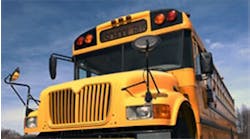Just after the beginning of the year, a student brought a gun to his Omaha, Neb., high school and fatally shot an assistant principal. A month later, a quarrel erupted on the campus of Middle Tennessee State University and a student allegedly shot and wounded a former student.
One doesn’t have to search very far to find incidents of life-threatening violence at schools and universities throughout the nation—let alone tragedies away from campuses such as a gunman’s January attack outside a Tucson, Ariz., grocery store that left six dead and Congresswoman Gabrielle Giffords seriously wounded.
These shootings are the latest to serve as reminders to education administrators that campuses are not immune from deadly violence and that schools and universities need to have comprehensive plans in place to identify and prevent potential trouble and minimize the harm when attacks do occur.
A key strategy in preparing education communities for the possibility of a crisis on campus is creating an emergency preparedness plan and establishing a crisis intervention team—also known as an incident management team (IMT).
The U.S. Department of Homeland Security has put together a guide that sets out the best practices for establishing an IMT at education institutions.
"IMTs provide administrators with immediate access to trained teams to assist in the management of incidents at schools," the guide says.
The department says that no formal standards exist regarding the number of people on an IMT because the makeup "depends on the size and type of school, the expertise of the members and the expected threats." Typically a principal will organize and lead a school-based IMT and a superintendent a district-based IMT.
"Safety experts recommend that school administrators work to establish IMTs at both the individual school and the district level," the department says. "While individual school IMTs are able to respond sooner to incidents, district IMTs typically have access to more resources."
Valuable expertise
Faculty and staff members can provide valuable expertise as members of an IMT. Among the instructors that should be considered as part of the team:
•Biology teachers may be able to help identify potential health hazards and know what protective actions to take in response to biological hazards.
•Chemistry teachers may know safety procedures related to hazardous material spills and have access to material safety data sheets with information about specific chemicals.
•Coaches have knowledge of athletic fields that may be needed as evacuation sites. Many coaches and physical education instructors also are trained in first aid, cardiopulmonary resuscitation and use of automatic external defibrillators.
•Special-education instructors may have knowledge of safety requirements and precautions that are needed to keep students with disabilities and special needs safe.
Other staff members may have expertise that warrants their inclusion on an IMT. For instance:
•Administrative assistants can help answer phones and identity people who do not belong in a school facility. They also may be the most qualified staff member during an evacuation to help preserve essential school records.
•Bus drivers may be aware of transportation hazards and can help coordinate the transportation of students and the evacuation routes that will be used.
•Cafeteria workers may be able to identify foodborne illnesses and help with safe food-handling procedures. During an extended emergency, they can help distribute food and water.
•Custodians and maintenance staff may know which chemicals, mechanical equipment and other supplies are stored in a school facility. They also can inform emergency responders of building specifications and how a facility’s fire alarm and sprinkler, ventilation and utility systems function.
•Counselors have the expertise to provide psychological assistance for students and staff during and after a crisis.
•Nurses can provide medical assistance and may be able to identify health hazards.
Identifying roles
The Homeland Security guide urges education institutions to establish an Incident Command System (ICS) that helps identify critical roles and enables responders to have an organized structure to effectively address an emergency. Among the key ICS roles that may be needed in a crisis:
•A school or incident commander--typically a principal or high-level administrator—organizes and directs a school’s response to an incident.
•A public information officer communicates with public officials, coordinates dissemination of information to the news media and provides status reports to the incident commander.
•A safety officer—usually a person in law enforcement—is responsible for ensuring the safety of students and school staff, and provides the incident commander with information on safety-related issues.
•A liaison officer serves as the direct contact between an incident commander and emergency responders, and as a communication link between the incident commander and community groups.
•An operations team helps an incident commander in carrying out an education institution’s emergency response. The team would be responsible for organizing searches, supervising the release of students and coordinating medical support.
•A planning team helps an incident commander develop a plan to resolve the ongoing emergency.
•A logistics team is put in place to ensure that facilities services, personnel, equipment and materials are provided to respond to a crisis. This team typically consists of maintenance workers, custodians and others with knowledge of an education institution’s resources.
•A finance and administration team is responsible for tracking expenditures and hours of labor related to an emergency response.
For each ICS role, two or three substitutes should be in place in case someone is unable to fulfill his or her responsibilities, the department says.
When a crisis occurs, the incident commander should establish an incident command post, which will serve as a central spot to which all members of the incident management team will report and where all emergency responses will be organized.
In a school building, a principal’s office may be the best site for a command post—it typically is centrally situated, faculty and staff already know where it is, and necessary information and documentation may be more accessible there. However, the guide notes, depending on the type of emergency and the response to it, the incident management team should be prepared to move a command post, possibly to an outdoor site.
Kennedy, staff writer, can be reached at [email protected].
Related Stories
Sidebar: Priorities Established
The emergency management plan at the University of Chicago establishes five priorities when a crisis occurs:
•Assistance for injured personnel.
•Safety of students, faculty, other academic appointees, staff, visitors and all others present.
•Mitigation of damage, including the safety and protection of research animals.
•Communication with university constituencies and downstream customers (e.g., University of Chicago Medical Center).
•Recovery and restoration of academic and research operations. The plan identifies 17 university departments who should have representatives on the Incident Management Team and provides guidance for the steps individuals should take when an emergency occurs.
“All members of the university community are encouraged to create a personal emergency response plan to guide the communication and actions between them and their loved ones during a disaster,” the plan recommends. “Having such a plan can lessen the feelings of anxiety that may accompany such situations.”



